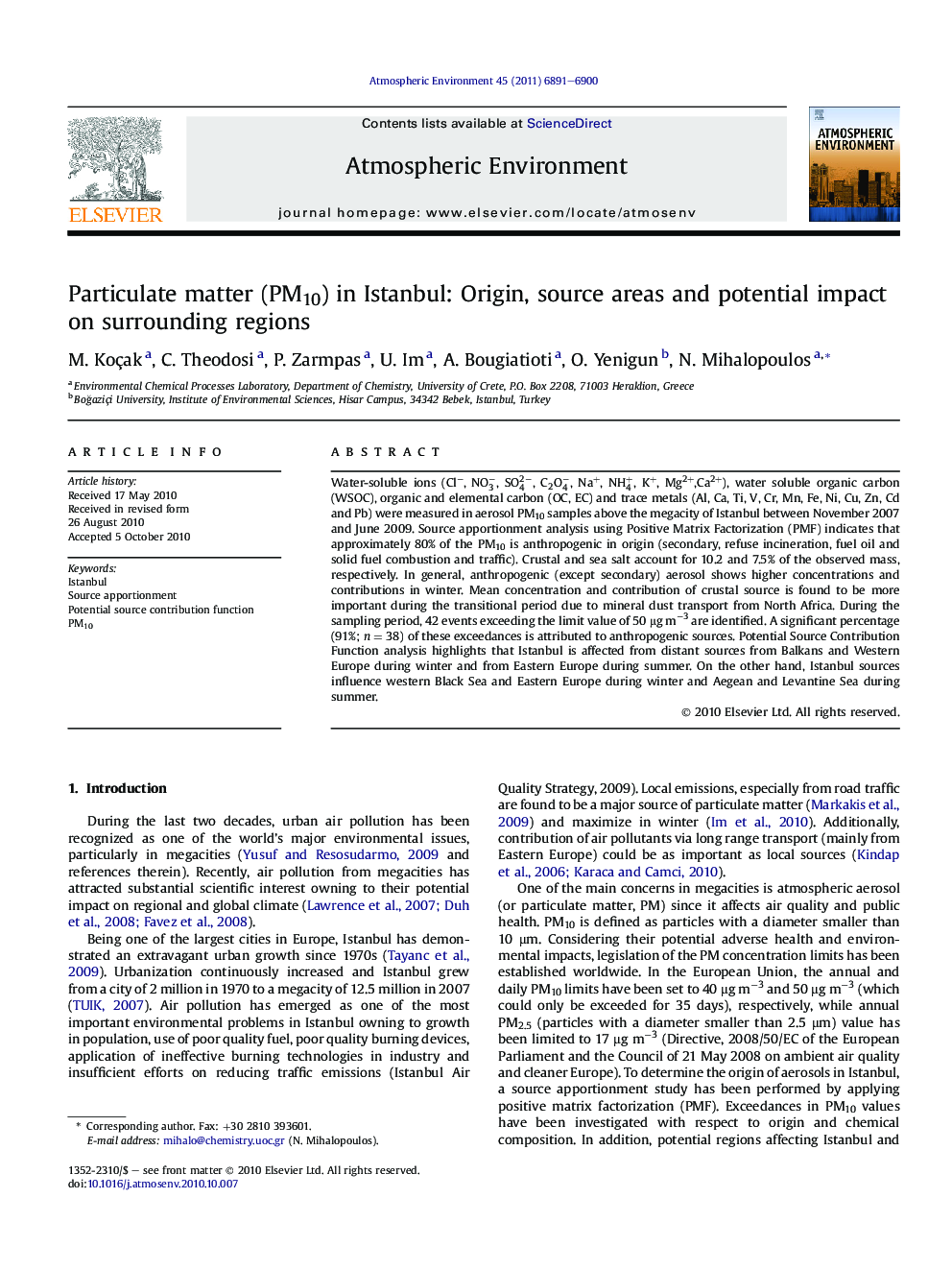| کد مقاله | کد نشریه | سال انتشار | مقاله انگلیسی | نسخه تمام متن |
|---|---|---|---|---|
| 4439489 | 1311022 | 2011 | 10 صفحه PDF | دانلود رایگان |

Water-soluble ions (Cl−, NO3−, SO42−, C2O4−, Na+, NH4+, K+, Mg2+,Ca2+), water soluble organic carbon (WSOC), organic and elemental carbon (OC, EC) and trace metals (Al, Ca, Ti, V, Cr, Mn, Fe, Ni, Cu, Zn, Cd and Pb) were measured in aerosol PM10 samples above the megacity of Istanbul between November 2007 and June 2009. Source apportionment analysis using Positive Matrix Factorization (PMF) indicates that approximately 80% of the PM10 is anthropogenic in origin (secondary, refuse incineration, fuel oil and solid fuel combustion and traffic). Crustal and sea salt account for 10.2 and 7.5% of the observed mass, respectively. In general, anthropogenic (except secondary) aerosol shows higher concentrations and contributions in winter. Mean concentration and contribution of crustal source is found to be more important during the transitional period due to mineral dust transport from North Africa. During the sampling period, 42 events exceeding the limit value of 50 μg m−3 are identified. A significant percentage (91%; n = 38) of these exceedances is attributed to anthropogenic sources. Potential Source Contribution Function analysis highlights that Istanbul is affected from distant sources from Balkans and Western Europe during winter and from Eastern Europe during summer. On the other hand, Istanbul sources influence western Black Sea and Eastern Europe during winter and Aegean and Levantine Sea during summer.
Journal: Atmospheric Environment - Volume 45, Issue 38, December 2011, Pages 6891–6900